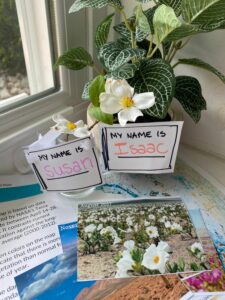Bringing Some Spark To The Start Of A Unit
Kick Off Your Unit With A Dash Of Curiosity
When I was in high school, I had a science teacher who started every unit the same way. She gave us a list of vocabulary words and instructed us to use our textbook glossary to copy the definitions into our notebook. Aside from being an entirely questionable vocabulary strategy for science (see here!), what an awful way to begin a new adventure!
Because that’s what each new unit, in any class, has the opportunity to be — a new adventure! Uncharted concepts to explore. Unexpected content to uncover. Exciting connections to make.
And here we were, beginning each new unit the exact same way — the exact same, awfully boring way.
If you’ve done this — if you’re still doing this — here’s my confession: I’ve done this, too! 😯🤫
(Or at least, a similar version – I hope mine wasn’t as dreadfully boring. 😂)
That said, thankfully I realized the error of my ways – and the opportunity each fresh unit gives us to spark curiosity and engage our students – and I’ve never looked back.
Read on to uncover a few of my favorite, super simple ways to catch students’ attention and up the ante when it comes to engagement in your classroom!
Fostering Curiosity By Changing Your Physical Space
Without a doubt, you’ve seen some of those room transformations on social media and thought to yourself, “Yah, I don’t have time for that.” Or even, “I would never be allowed to do that!”
And I hear you.
But the truth is, you don’t need to transform every square inch of your room to get students wondering about the next unit of study. Even small changes can make a difference.
Welcome A New Guest
When my students walk into my classroom on the first day of our ecology unit, they are greeted by the sight of a few new guests.
Susan is my fake potted plant. She sits on the table at the front of the room with a name tag that says, “Hi, I’m Susan.” (Isaac, the other plant, sits next to her.) Nearby, we have our turtle named Leo. (He may or may not be a ninja turtle. 🤷🏼♀️😉 And finally, Fran – a very small plastic bumblebee – rests nearby. 
In every class, I get the question – what are those? Or, why are those things here?
I usually answer something along the lines of, A fake plant. Or, that’s Susan. 😂
And with very little effort, I’ve sparked some degree of curiosity in my students. Does it always translate to interest in the content? Not always.
Does it alone maintain engagement for the entire unit? Definitely not.
But it does get us started off on the right track — with my students, asking questions, and me, generally leaving those questions unanswered. (And oh, how that frustrates them!)
Play Some Mood Music
Along the same lines of a surprising guest, creating some ambience in the room with relevant mood music or sounds can get kids wondering what’s going to happen next.
For example, one of my teacher-friends has the OK Go music video for “This Too Shall Pass” playing as students enter on the first day of student learning on energy transformations. Students are not only intrigued by the music but are also captivated by the Rube Goldberg machine that runs throughout the video.
Of course, this works for other subjects, too! Social Studies teachers can play music from the era under study, or English teachers can play nature sounds related to the poem or novel students are about to read. Bringing Some Spark
Set A Scene
I was in my science classroom earlier this year when I overheard students talking about something going on in the English teacher’s room. They had been surprised to find, when they walked into the classroom, that one corner of the room had been transformed (very simply) into a kitchen.
Of course, I had to peak in to get a look myself. I found a large piece of white butcher paper had been cut into the shape of a refrigerator — decked out, of course, with children’s drawings and pretend family photos. And a string and some sticky-hooks held up a small curtain, creating the effect of a window on the wall. A desk was set in the center, covered with a checkered tablecloth and a vase with a flower. It was a quaint, little kitchen. Bringing Some Spark
I have no idea what the students were reading — whether it was a short story, a novel, or a play. But a few simple touches — completed over a single prep period (maybe less, if she was able to get her students involved!) — created a tool she could use for the entire unit. A tool to spark curiosity (I mean, she got them talking about it, right!?), a tool to analyze the setting, or act out scenes.
She didn’t have to transform her entire room — one small corner made all the difference.
Starting With A Success
As educators, we know that engaging students can be a challenge. But we don’t have to make it more difficult by starting our units off with bore-and-snore approaches like copying vocabulary. Taking a few moments to reflect on how we can bring a little creativity, a little spice, a little wonder to our classroom can set our students off on a learning path built on a (however small) foundation of curiosity.
We’re getting a quick win — a win we can build from with engaging instructional strategies and relevant content learning.
And it doesn’t take an extreme classroom makeover to do it!
Bringing Some Spark Kids Discover Kids Discover Online
